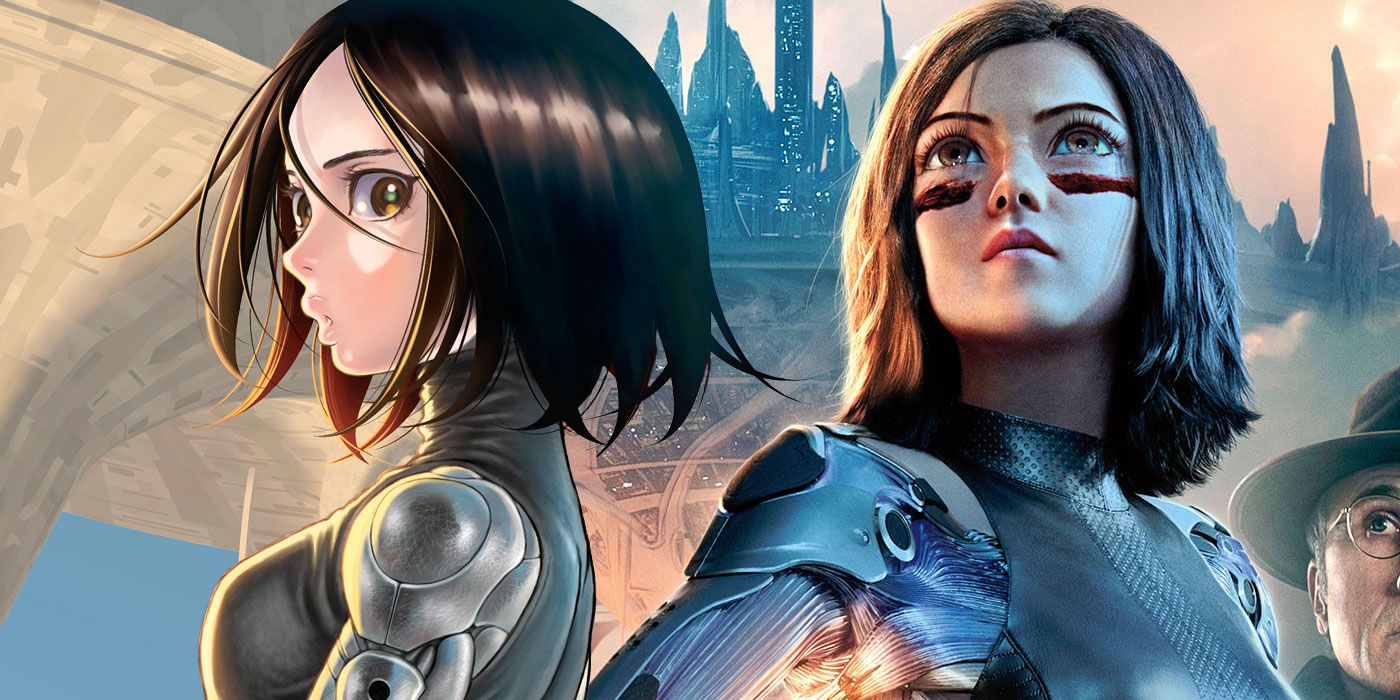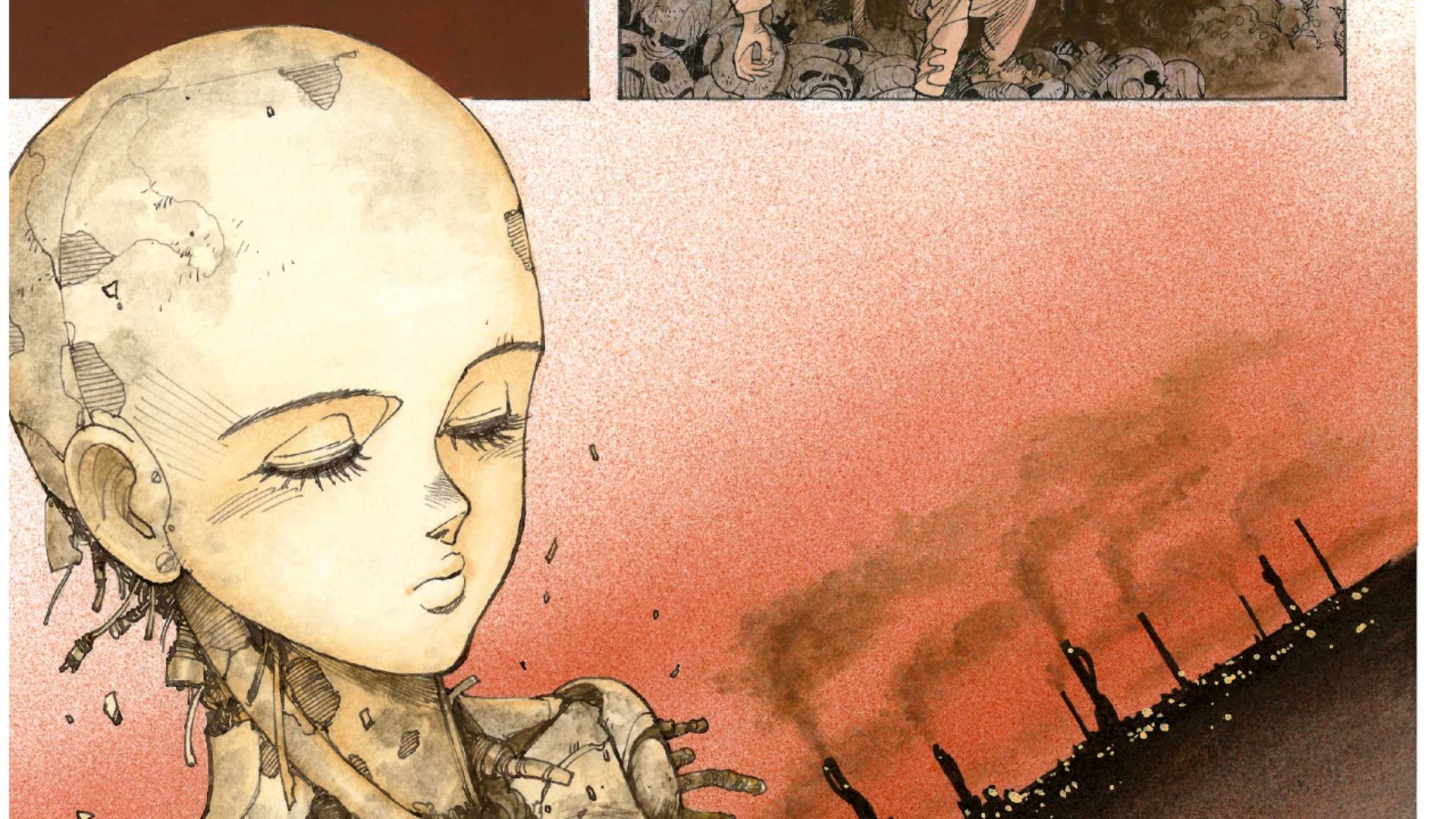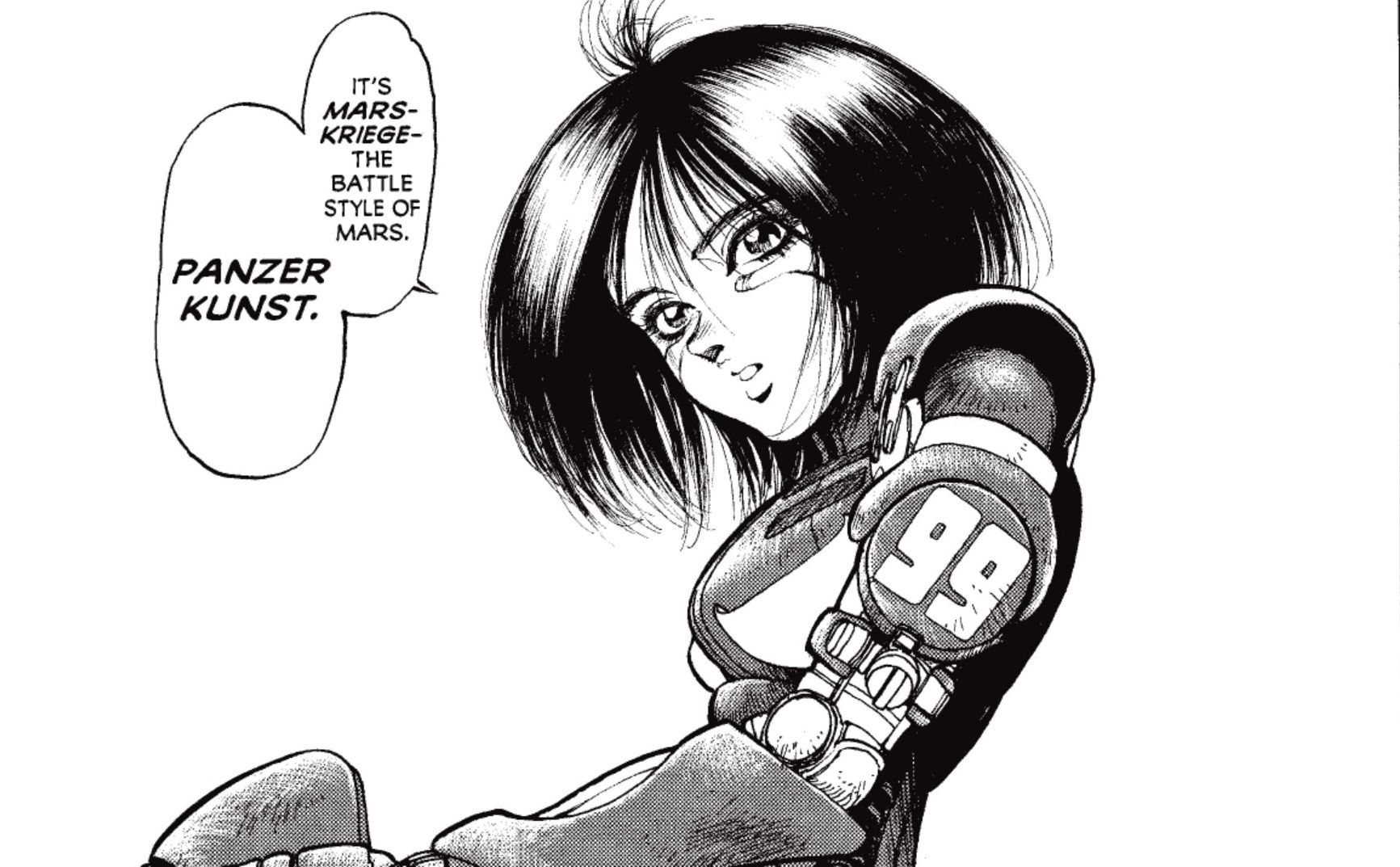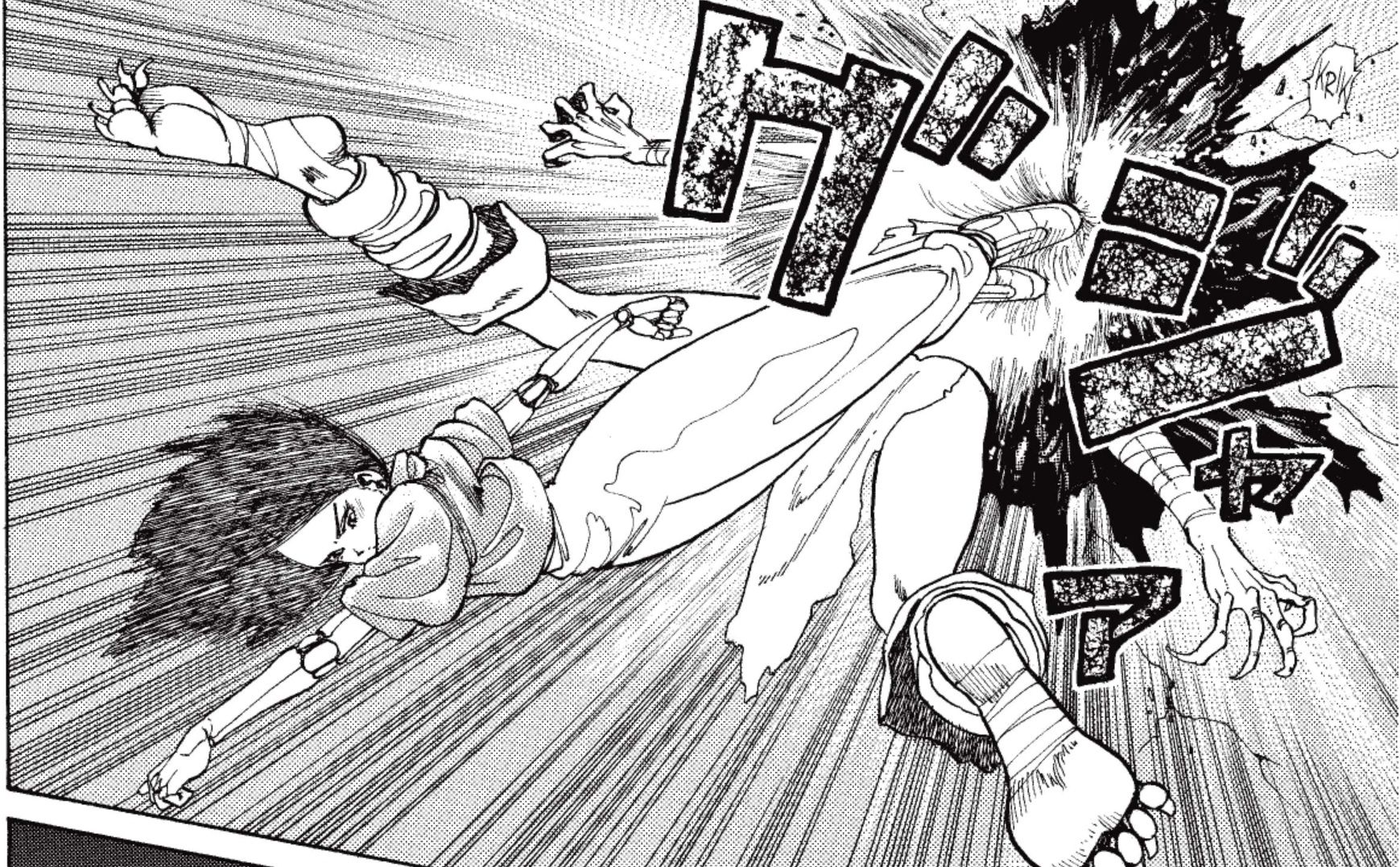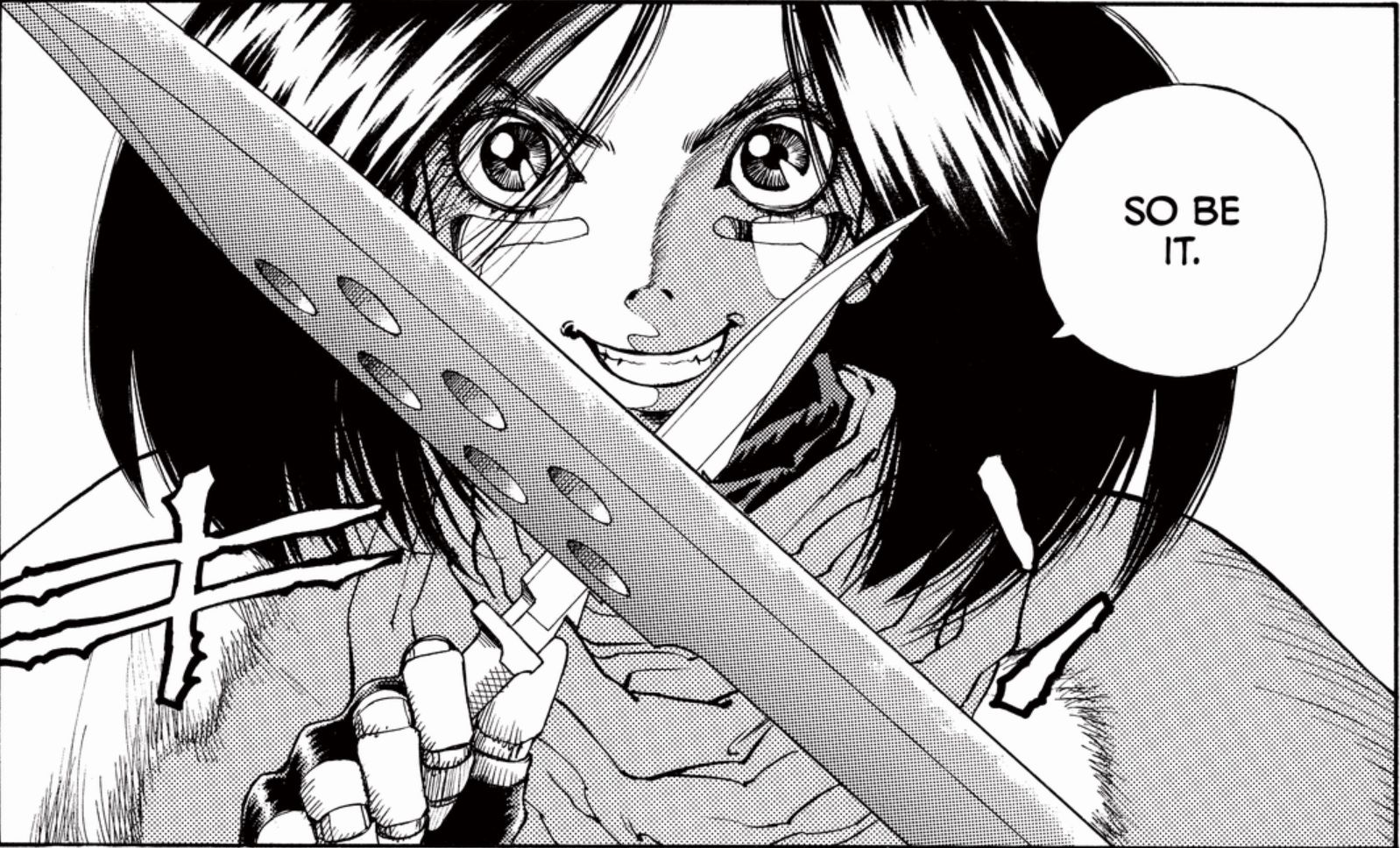This weekend sees the release of a project 15 years in the making: Alita: Battle Angel. Directed by Robert Rodriguez (Spy Kids, El Mariachi) and produced and co-written by James Cameron (Titanic, Avatar), the film represents the culmination of Cameron's 15-year quest to make a movie out of Yukito Kishiro's acclaimed and influential cyperpunk manga Battle Angel Alita.
But is there anything in Alita that can speak to audiences today? We've been diving into the manga and we think we know the answer. At its heart, Battle Angel Alita is a story about the future and potential of humanity... as told by a cyborg woman who kicks just a tremendous amount of ass.
Rescued From The Wreckage
The story of Battle Angel Alita begins in a scrapyard. More specifically, in a dump in the Scrapyard, a vast wasteland existing in a desert in the 26th century under the floating paradise city of Zalem, whose citizens live and die in squalor while toiling away at the Factories that supply Zalem.
Daisuke Ido (renamed Dyson Ido and played by Christoph Woltz in the film), a doctor specializing in treating cyborgs, finds the head of a highly advanced cyborg girl among the trash. Restoring it and attaching it to an experimental "Berserker" body he also found, he names her after his recently deceased cat, Alita (known as Gally in Japan and played by Rose Salazar in the film) and raises her as a daughter.
Initially content with her life, Alita begins longing for something more and finds it when she meets Yugo, a mechanic and dreamer who longs to go to Zalem. Alita finds out, to her horror, he's financing that dream by luring cyborgs in with free oil changes, then stealing their spines to sell to the charismatic Factory businessman Victor.
Alita's horror at this discovery sets off a chain of events that leads to her leaving Ido and the Scrapyard, becoming first a superstar in the hyper-violent sport of motorball, then a musician and an assassin on behalf of Zalem, which eventually leads to her saving the world.
RELATED: Battle Angel Alita Creator Yukito Kishiro Is 'Super-Honored' By the Film
A Long Road To Success
Published from 1990 to 1995 in the monthly Japanese manga magazine Business Jump, Kishiro's original manga, published in Japanese as Gunmm (a portmanteau of "gun" and "dream") was first picked up for American publication by Viz Media right after it ended. In keeping with the prevalent attitude that Americans wouldn't read manga in its original format, Viz had adapters Fred Burke and Toshifumi Yoshida flip the artwork from left to right and changed several names and locations (making Gally into Alita and so on) and released the results as a monthly comic. From 2003-2005, at the height of the manga boom, Viz published their translation unflipped in book form.
But seeing as how the series didn't cross over into anime outside of a two-episode OVA (original video animation) in the 1990s -- which later on was almost exclusively due to James Cameron tying up all the rights -- it was never a big hit for Viz and, thus, they let the license lapse. In 2017, Kodansha Comics USA (the Random House manga imprint co-owned with Japanese publisher Kodansha, who became Kishiro's publisher in 2012) began republishing the manga digitally and in print, along with its sequel series Battle Angel Alita: Last Order and the currently running Battle Angel Alita: Mars Chronicle.
To make their own claim on the property, Kodansha reached out to veteran translator Stephen Paul (One Piece, Vinland Saga) to re-translate the entire series. It was an easy call, to hear Paul tell it: "I've had a constant working relationship with Kodansha Comics for over a dozen years," he said, "back to when the operation was still directly under the branding of Random House's Del Rey imprint [known as Del Rey Manga]. Leading up to Alita's re-release, I did some work on their hardcover re-releases of Ghost in the Shell and Akira, so when the plans for a full re-translation of Alita went into motion, they came to me again." Compared to those other specific titles, Paul had a lot more freedom with Alita.
NEXT PAGE: Battle Angel Alita Doesn't Shy Away From Gore
"Since this wasn't a retouching of an existing translation... but redone from scratch," Paul continued, "I didn't really have to worry about deciding what would make it 'relevant' or different enough for today's readers. I just treated it like I would any other series and tried to get the best out of the material as I saw it."
A surprise to people who've only read modern manga releases might be that Kodansha's Alita releases utilize a once common, now forgotten practice. Rather than writing the translation by the original Japanese SFX, the art is left unaltered in that respect and the translations are lumped in a glossary at the end of the book. According to Paul, this was a continuation of other successful classic manga releases.
"When I worked on the hardcovers for Ghost in the Shell and Akira," he said, "a major part of my job was to compare the old left-to-right retouched releases to the original Japanese, to make sure all the text was still accounted for. Since the old English editions retouched all the SFX too, and they wanted the original art and presentation to be a selling point, I think the decision was made to do as little alteration of the art as possible, and thus the SFX index was implemented instead. When it came to Alita, given that the format had been working successfully, I think they decided to continue with that plan."
The result is striking and helps put the native English speaker in a place to greater appreciate Kishiro's bombastic action and incredible way of depicting horrific violence.
RELATED: Alita: Battle Angel Opens Strong in Asia Ahead of US Release
Why James Cameron Wanted To Make This
To read Battle Angel Alita in 2019 is to be transported back to the same cyberpunk mental space of fantastic ultra-violence and grimy futuristic dystopias that not only describes other series like Akira and Ghost in the Shell, but also Western properties like Blade Runner and The Terminator.
And with that comparison, it's a small wonder the series attracted James Cameron's attention (after he was supposedly introduced to it by Guillermo del Toro). With the first Terminatior, Terminator 2 and even all the way up to Avatar, Cameron as a director has always combined hyper emotional and arch characters with breathtaking action. Same with Robert Rodriguez, whose movies can depict horrible things, but also revel in the fact that you're seeing them (see Machete or Planet Terror). It's that same marriage you find in Alita.
From Alita and Ido to later characters like the walking Ryu cosplayer Figure Four and villains like the deranged Desty Nova and the horrifying Zapan, every character in Alita wears their heart on their sleeves and shouts their feelings like a pro wrestler or Silver Age superhero. Combined with the '90s cyberpunk aesthetics, it's a captivating blend that never gets old.
Neither does the violence. While some of Alita's manga contemporaries like Blade of the Immortal hid the ultra-violence in artistic license, Kishiro doesn't shy away. Every wrecked Motorball contestant, every limb severed or wound suffered is on display in stunning detail. It's astonishing and backs up the hyper-intense emotions, particularly the stretches where Alita becomes vengeance-crazed and almost psychotic.
Paul concurs, "The art is really striking, especially for its time, and the story wears its influences on its sleeve in a way that is joyous and vivid." Given that Rodriguez and Cameron have made stellar filmographies out of that blend, hopefully their film captures the spark that made Alita so enduring in the first place.

